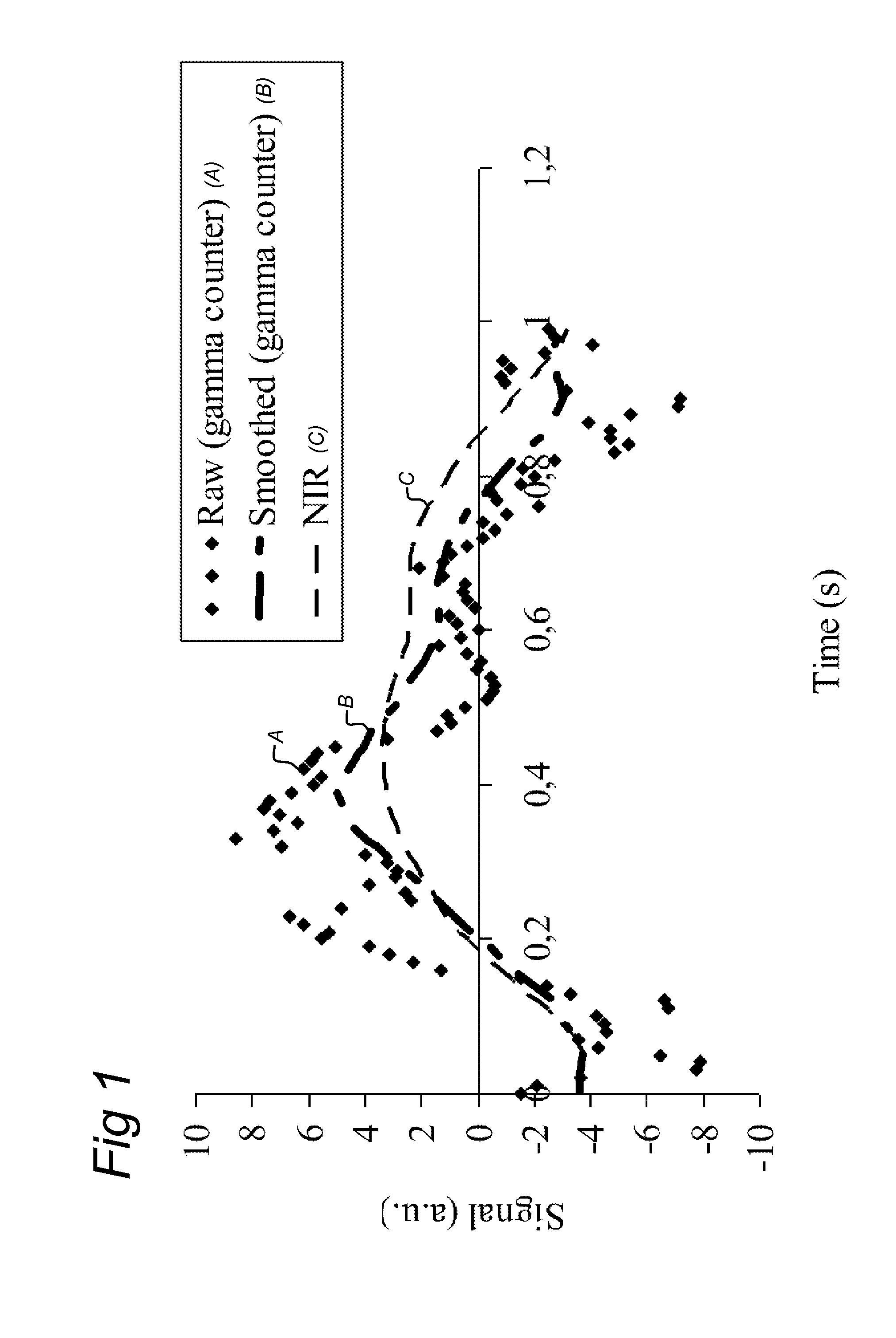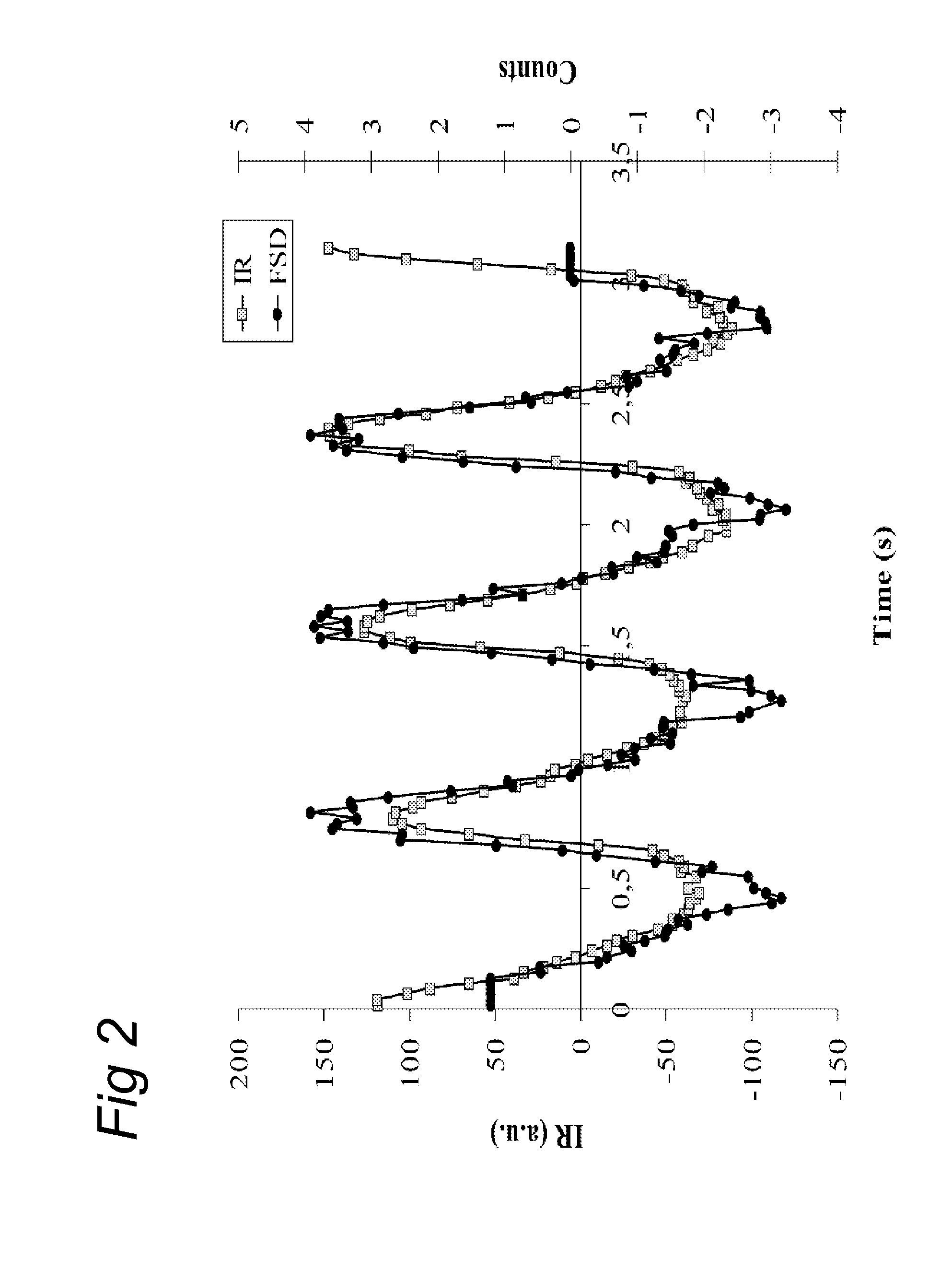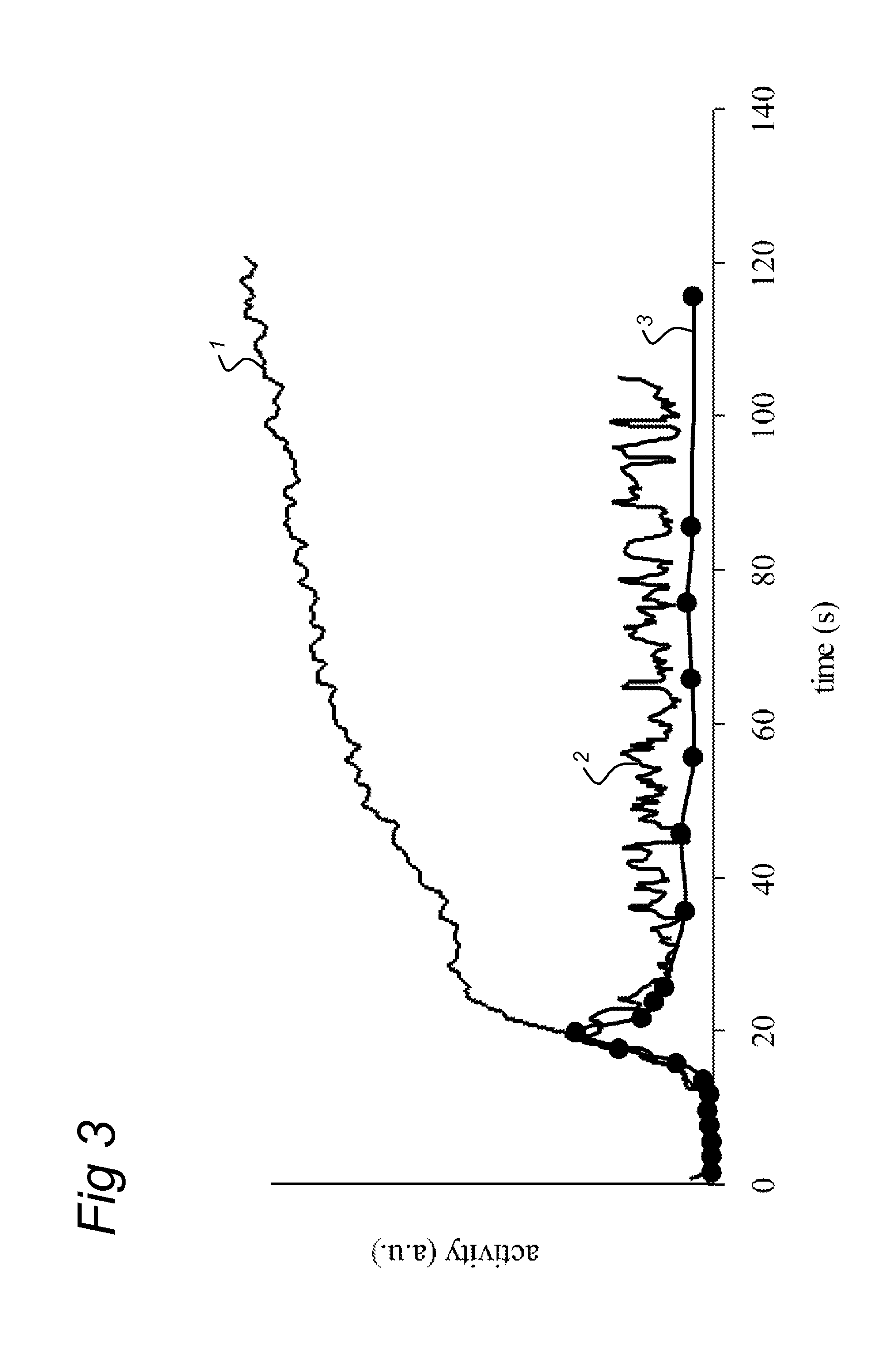Method for non-invasive quantitative assessment of radioactive tracer levels in the blood stream
a radioactive tracer and blood stream technology, applied in the field of non-invasive quantitative assessment of radioactive tracer levels in the blood stream, can solve the problems of difficult interpretation of conventional pharmacokinetic modelling by dynamic scanning or blood withdrawal, and it takes a long time for the underlying pharmacokinetics to reach
- Summary
- Abstract
- Description
- Claims
- Application Information
AI Technical Summary
Benefits of technology
Problems solved by technology
Method used
Image
Examples
experiment 1
[0055]Arterial vessels vary in diameter due to the pumping movement of the heart. When radiotracers are injected intravenously the radiotracers will dissolve in the blood stream. A gamma counter placed over a part of the body containing arterial vessels will measure a time varying volume of arterial blood. The concentration of radiotracer is assumed to be constant within one heartbeat, therefore causing the number of counts to vary with the changes in the volume of the arterial vessels. In addition, due to the redistribution of the radiotracer in other organs the concentration radiotracer in the blood will decrease. This decrease is reflected in a diminishing of the amplitude of the heartbeat-induced volume changes.
[0056]A change in the amount of circulating radioactive tracer is measured using phase-sensitive detection of the time-varying signal and the changing arterial blood volume. To validate that the time-varying signal is indeed caused by volume changes of the arterial blood ...
experiment 2
[0061]Fluorine-18 labelled fluoroazomycin arabinoside ([18H]FAZA), has been developed as an PET tracer for assessment of Tumour hypoxia. For evaluation of the distribution over time of this tracer dynamic Pet scans have been performed during the first 20 minutes after administration of the tracer. Patients were measured twice in two consecutive days. To evaluate the Phase sensitive detector, we placed the probe between de knees of the patient while the dynamic PET scan was performed. The dynamic scan was constructed in time frames with a duration of 2 seconds. One ROI was placed over the left carotic artery an other ROI over an adjacent muscle.
[0062]FIGS. 4A and 4C show the phase sensitive signal acquired in the knee as compared to the measurement acquired with the PET from the carotic artery. FIGS. 4B and 4D show the low pass filtered signal from the probe compared to the PET signal from the musculature in the neck.
PUM
 Login to View More
Login to View More Abstract
Description
Claims
Application Information
 Login to View More
Login to View More - R&D
- Intellectual Property
- Life Sciences
- Materials
- Tech Scout
- Unparalleled Data Quality
- Higher Quality Content
- 60% Fewer Hallucinations
Browse by: Latest US Patents, China's latest patents, Technical Efficacy Thesaurus, Application Domain, Technology Topic, Popular Technical Reports.
© 2025 PatSnap. All rights reserved.Legal|Privacy policy|Modern Slavery Act Transparency Statement|Sitemap|About US| Contact US: help@patsnap.com



